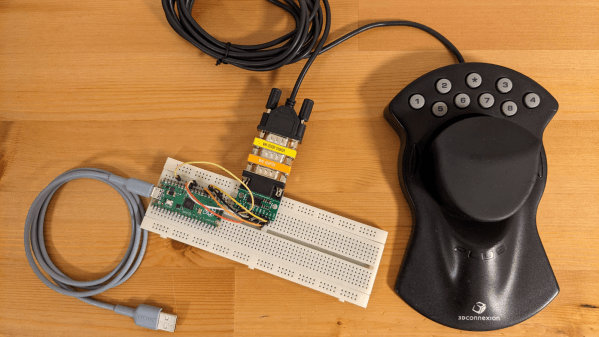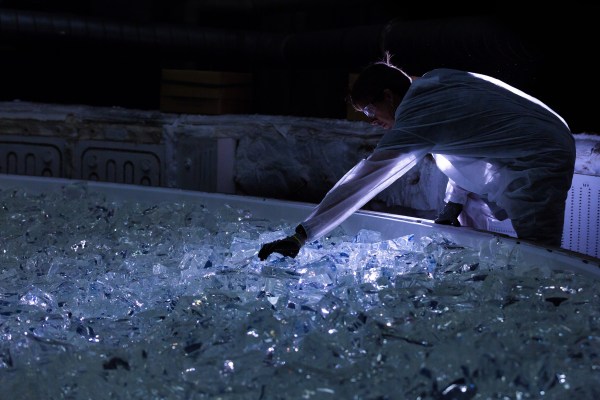[Jacek Fedorynski] had an old Magellan/SpaceMouse 3D mouse with a serial interface which made it impossible for him to use with modern hardware and software. The problem he faced was two pronged – the absence of serial interfaces in the hardware and the lack of appropriate drivers for the operating system. So he built a low cost, simple adapter to use his RS-232 Magellan/SpaceMouse with modern software.
The hardware required to build the adapter was minimal. A Raspberry Pi Pico, a MAX3238 based RS-232 adapter, a null modem adapter and a DB9 gender changer. Of course, a combination null modem – gender changer would have made things even simpler. Four of the GPIO pins from the Pico are mapped to the serial RX, TX, RTS and CTS pins.
On the software side, the code emulates a 3DConnexion SpaceMouse Compact, so it can be used with software like Fusion 360, 3ds Max, SolidWorks, Inventor, Maya and many others. On the host computer, only the standard 3DxWare driver package is needed. On the host computer, the old Magellan/SpaceMouse 3D will appear like a modern SpaceMouse Compact connected over USB. The only downside to this is that the SpaceMouse Compact has just two programmable buttons, so only two of the many buttons on the old Magellan mouse can be mapped.
Flashing the code to the Pico is also straightforward using the BOOTSEL mode. Hold down the BOOTSEL button when plugging in the Pico and it appears as a drive onto which you can drag a new UF2 file. Just drag-n-drop [Jacek]’s magellan.uf2 firmware and you’re done.
If you’d rather build your own, modern 3D mouse, check out the DIY Cad Mouse You Can Actually Build.














